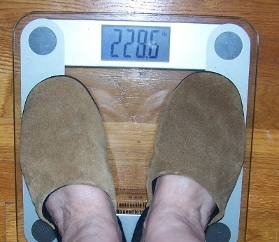I recently posted the following problem from the Moscow Olympiad:
There were n people at a meeting. It appears that any two people at the meeting shared exactly two common acquaintances.
- Prove that all the people have exactly the same number of acquaintances at this meeting.
- Show that n can be greater than 4.
Here is the proof for the first bullet. Choose a person X. Take a pair of X‘s acquaintances. These two acquaintances have to share two acquaintances between themselves one of whom is X. In other words, we have described a function from all pairs of X‘s acquaintances to people who are not X. On the other hand, for every person who is not X, s/he and X share a pair of acquaintances. Hence, there is a bijection between people other than X and all pairs of X‘s acquaintances. If the number of X‘s acquaintances is a, and the total number of people is t, then we have shown that (a choose 2) = t−1. As this is true for any X, we see that everyone has the same number of acquaintances. Moreover, this situation can happen only if t−1 is a triangular number.
But wait. There is more work that needs to be done. The smallest triangular number is 1. That means that t might be 2. If there are two people at the meeting, then the condition holds: they have 0 common acquaintances. The next triangular number is 3. So we need to see what would happen if there are four people. In this case, if everyone knows each other, it works. This is why the second bullet asks us to find an example of the situation with more than four people, because four people is too easy.
Let’s look at larger triangular numbers. The situation described in the problem might also happen when there are:
- 7 people total and everyone has 4 acquaintances,
- 11 people total and everyone has 5 acquaintances,
- 16 people total and everyone has 6 acquaintances,
- and so on: a(a−1)/2 + 1 people total and everyone has a acquaintances.
The official Olympiad solution suggests the following example for 16 people total. Suppose we put 16 people in a square formation so that everyone knows people in the same row and column. I leave it to the reader to check that every two people share exactly two acquaintances.
Let me prove that there is no solution for a total of seven people. If there were a solution, then each person would have to know four people. My first claim is that the acquaintance graph can’t contain a four-clique. Suppose there is a four-clique. Then each person in the clique has to have another acquaintance outside of the clique to make it up to four. In addition, this extra acquaintance can’t be shared with anyone in the clique, because the clique contains all the acquaintances that they share. This means we need to have at least four more people.
Next, suppose two people a and b know each other and share an acquaintance c. Any two people in this group of three has to have another shared acquaintance, who is not shared with the third person. That is, there should be another person who is the acquaintance of a and b, a different person who is an acquaintance of a and c, and a third person who is acquainted with b and c. These three extra people are all the acquaintances of a, b, and c. Which means the last person who is not acquainted with a, b, or c, has less than for four acquaintances.
Let’s look at a more difficult problem that I offered at the same posting:
There were n people at a meeting. It appears that any k people at the meeting shared exactly k common acquaintances.
- Prove that all the people have exactly the same number of acquaintances at this meeting.
- Is it possible that n can be greater than 2k?
As in the previous solution, we see that a, the number of acquaintances of a person and t, the total number of people, satisfy the following equation: (a choose k) = (t−1 choose k−1).
For example, if k = 3, the equation becomes (a choose 3) = (t−1 choose 2). This is a question of finding numbers that are both tetrahedral and triangular. They are known and their sequence, A027568, is finite: 0, 1, 10, 120, 1540, 7140. The corresponding number of acquaintances is 3, 5, 10, 22, 36 and the total number of people is 3, 6, 17, 57, 121. The first trivial example involves 3 people who do not know each other. The next example is also simple: it has 6 people and everyone knows everyone else.
What about non-trivial examples? If there are 17 people in the group, then each person has to know 10 people. Does the acquaintance graph exist so that every group of three people share 3 acquaintances?
We see that the problem consists of two different parts. First, we have to solve the equation that equates two binomial coefficients. And second, we need to build the acquaintance graph. Both questions are difficult. We see that for k = 2 we have an infinite number of solutions to the equation with binomial coefficients. For k = 3, that number is finite. What happens with other k? If there are 2k people and they all know each other, then this works. But are there other non-trivial solutions? I am grateful to Henry Cohn for directing me to the works of Singmaster who studied non-trivial repetitions of numbers in Pascal’s triangle. In particular, Singmaster showed that the equation (n+1 choose k+1) = (n choose k+2) has infinitely many solutions given by n = F2i+2F2i+3−1 and k = F2iF2i+2−1.
This sequence generates the following non-trivial examples (15 choose 5) = (14 choose 6), (104 choose 39) = (103 choose 40), and so on. That means it might be possible that there is a group of 16 people so that every 6 people share 6 acquaintances. In this situation every person must know everyone else except for one other person. That leads us to the structure of the acquaintance graph: it is a complement to the perfect matching graph. I leave it to my readers to check that the corresponding acquaintance graph doesn’t exist. Are there examples of two binomial coefficients that equal each other and that lead to an acquaintance graph that can be built?
Now that I’ve tackled the solution to this Olympiad problem, I see that I generated more questions than I answered.
Share:






